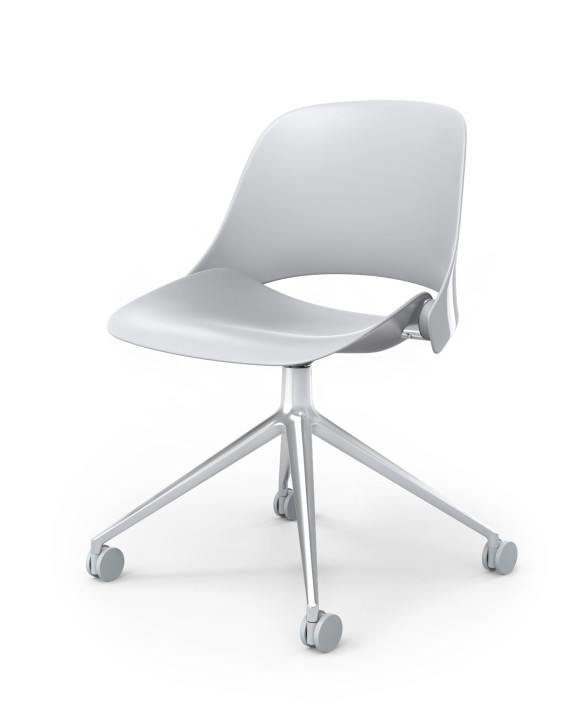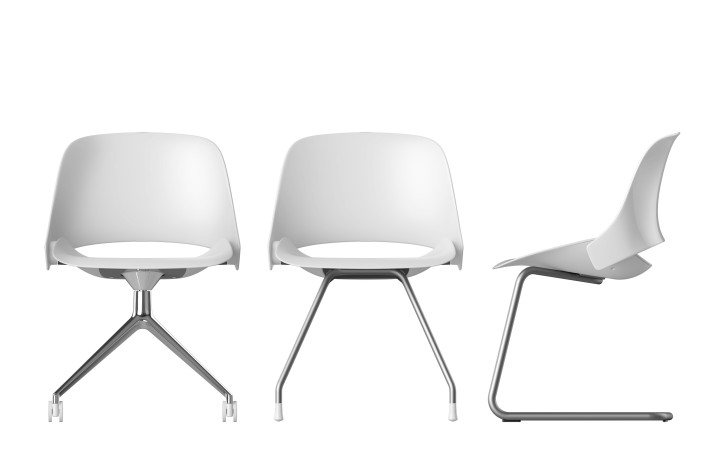Welcome to the future of the office: furniture inspired by crustaceans. On the forefront is Todd Bracher and Humanscale’s Trea chair, inspired by the exoskeleton of a lobster. The chair was previewed at NeoCon and is set to launch in Q4 this year. Bracher created the chair to movewith its occupant, allowing for optimum freedom and comfort in the workplace; a “shell you wear”. We touched base with a rep at Humanscale to find out more.

How will the chair impact the workplace?
The Trea chair is a revolution in seating solutions. A true multipurpose chair, it is designed for use in a variety of spaces. It is equally at home in conference rooms and cafeterias as it is at workstations and in collaborative spaces. Its sculptured and innovative styling contributes to a fresh, yet classic aesthetic that complements both contemporary and next-generation spaces. With a variety of base (cantilever, four-leg and four-star), finish and upholstery options to choose from, this chair provides can be uniquely tailored to each space while maintaining a uniform aesthetic in the overall setting.
It also provides the ultimate in comfort to users, encouraging health, wellness and productivity. Made by the leader in ergonomic seating, it features a unique and innovative solid state recline mechanism that offers up to 12 degrees of recline, allowing the user to move freely and relax without the need to adjust manual controls. This recline mechanism sets the Trea chair apart from other chairs in its class, as it does not contain a metal spring and it makes the chair truly functional from an ergonomics standpoint. Its contoured backrest cradles the body’s natural curves, providing automatic lumbar support.

How does it contribute to “new ways of working”?
The Trea chair is ideal for the emerging active work space, which prioritizes balanced movement and encourages comfort, health and productivity. Its solid state recline mechanism and contoured backrest allow users to sit comfortably as they perform their work, and, importantly, move freely. In today’s rapidly changing work environment, people move through their work spaces more to collaborate and, thanks to technology, many employees work remotely, from home or in alternate work spaces. Because of this, spaces need solutions that are appropriate for a range of users and uses. The Trea chair’s design aesthetic allows it to visually complement any environment. Its contoured back and solid state recline mechanism that automatically adjusts to the user also make it a truly versatile chair that is designed to meet the evolving needs of today’s work spaces. In addition to the active work space, the Trea chair is perfect for collaboration spaces, another emerging trend in today’s workplace, because it’s easy to use. Employees can simply pull up a Trea chair and get working without thinking about how to adjust the chair to their bodies. This allows people to move freely and comfortably perform their work.
Tell us more about the lobster inspiration.

Todd Bracher sought to create an innovative, multipurpose chair that could meet the needs of a broad range of users. Bracher and the Humanscale Design Studio wanted the Trea chair to be comfortable too, and focused heavily on refining the contours of the seat and back to maximize comfort. The design process was about connecting these two ideas in the cleanest and simplest way to ensure it accommodated today’s users and spaces. For inspiration, Bracher drew on the lobster’s exoskeleton that moves with the body of the lobster as it crawls about. He wanted to mimic this experience of “the shell you wear” with his Trea chair.
When was the product introduced?
We previewed the product at NeoCon 2014, and it will officially launch in Q4 2014.
What do you think our readers will love about the chair?
Its fresh, modern design aesthetic with clean lines and its comfort. The Trea chair embraces simplicity of form and function, offering a beautiful aesthetic for any space and intuitive use for every user.
How much will it cost?
Retail, the four-leg base starts at $399, the cantilever base starts at $449, and the four-star base: starts at $599
This interview has been edited and condensed.


